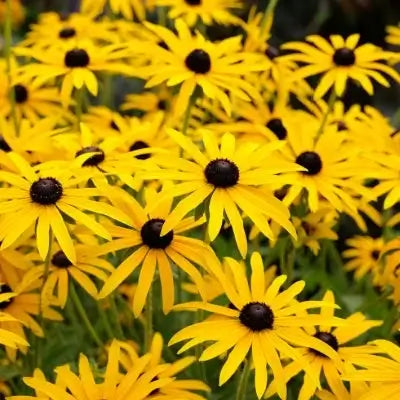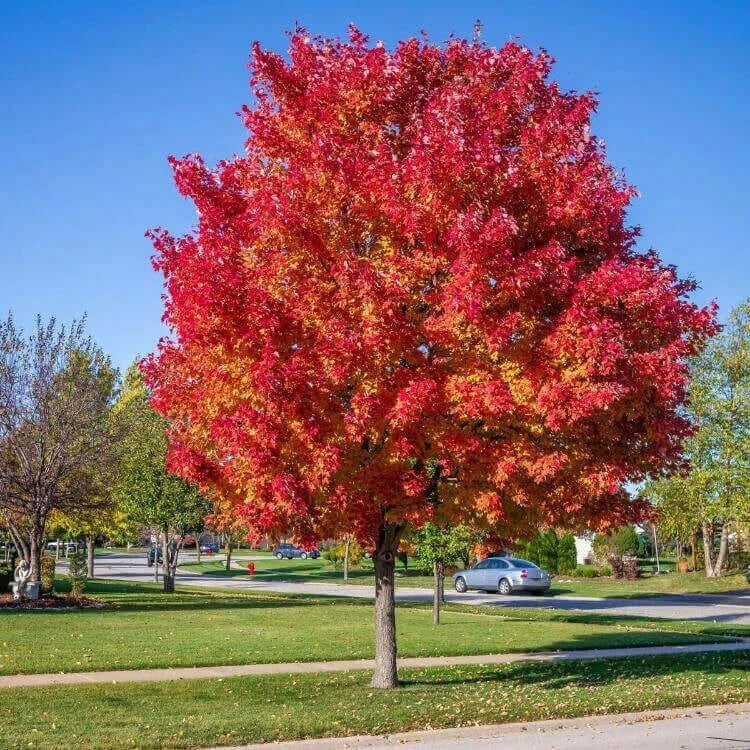Nature’s Living Architecture
Share
The Beauty and Benefits of Climbing Perennials in Your Garden
The unique allure of climbing perennials guides our gaze skyward while converting essential areas into verdant vertical landscapes. These enduring climbing vines create decorative patterns on walls and fences while draping over pergolas and trellises to weave a captivating blend of leaves and flowers that can soften structural edges and create a magical atmosphere. Unlike annual vines, which must be replanted annually, these climbing plants return year after year with increased vitality due to their deepening root systems. Certain climbing perennial varieties flourish with minimal care, but attentive gardeners receive lavish growth and vivid blooms from other types when proper support and care are provided.
The Appeal of Climbing Perennials
Gardeners frequently select climbing perennials because they use space efficiently. The vertical growth of these plants frees up the ground space for other species while introducing additional layers of greenery and floral displays. One strategically positioned climbing plant can convert a bare fence into a flourishing vertical garden or wrap a metal railing with twisting stems. Gardeners facing spatial limitations benefit from this technique, while those who value the natural artistry of vine-structure interactions will find it especially appealing. A garden's vertical dimension is the creative ground where designers can display dramatic flowers or emphasize evergreen leaf patterns.
Choosing the Right Climbing Perennial: Factors to Consider
Choosing the appropriate climbing perennial requires more than picking the most attractive flower. Site conditions, including sunlight exposure, soil type, and wind exposure, require careful attention when selecting climbing perennials. Vigorous climbing vines need sun exposure to produce their most vigorous stems and abundant floral displays. Certain climbing plants can grow in partial or complete shade because they perform well against building north sides or under tree canopies. Sun-loving climbers benefit from positioning near south-facing walls that emit residual heat, while cooler-rooted plants do well in areas protected by mulch or other plant companions. A vine that fits its environment leads to a much smoother path toward successful growth.
Many climbing perennials depend on support structures to reach their full growth potential. While some vines naturally grow over shrubs or trees, trellises, arbors, and pergolas provide intentional structures that direct vine growth in an organized and aesthetic way. Certain vines have aerial roots or sticky pads firmly attached to wooden or brick surfaces. These climbing plants wrap their stems around support structures using horizontal or diagonal frameworks. Another group of climbing plants utilize tendrils or leaf petioles to secure themselves. Climbers must attach themselves to appropriate structures to prevent their stems from losing direction or failing under their weight. Gardeners can predict potential harm to surfaces by understanding plant attachment methods. Firmly attaching vines can develop moisture problems and weaken the structural integrity of wood or masonry surfaces.

Pruning, Support, and Maintenance
The success of planting a climbing perennial depends on the soil quality, which needs careful evaluation. Most climbing perennials flourish in soil that drains well yet has sufficient moisture retention capacity for root health. Adding organic matter to the planting area produces vigorous plant growth while minimizing regular fertilization requirements. The vines show productivity when established but require balanced organic fertilizer to ensure lush foliage and plentiful flowers. Adjust watering routines based on rainfall patterns and mulch presence since mulch helps maintain moisture and regulates soil temperatures.
Climbing perennials eventually surpass their designated space or produce tangled stems, which prevent proper flowering. Regular pruning helps preserve plant shape and stimulates new growth. Incorrect timing in pruning these vines results in removing flower buds that would bloom in the following season. Certain plants produce new flowering stems annually and positively respond to pruning during late winter or early spring. Understanding how plants bloom and grow helps you select the best maintenance approach. Through pruning, you can manage overgrown vines, eliminate dead or damaged branches, and focus plant energy on healthy areas.
Many climbing perennials require simple pest and disease management because of their sturdy nature and elevated growth pattern. The benefit of air movement around vines helps to minimize fungal infections. Regular inspections help detect problems early. Gardeners who maintain diverse plant populations usually find that the variety protects against pest outbreaks, which target young shoots and developing flower buds. Beneficial insects patrol vines to hunt aphids and common pests, which helps decrease the need for chemical treatments. Healthy vines are typically achieved by promoting ecological balance.
Cultivating climbing perennials brings the benefit of an extended period of visual enjoyment. Every spring, firmly rooted vines reappear and tend to spread beyond their previous size. The vine's blooms produce a fantastic floral display lasting several weeks, sometimes repeating with multiple flowering cycles. Certain varieties emit a delightful fragrance that fills entryways and patios with their scent. When seasons change, foliage gains autumn hues before the plant enters winter dormancy. Every year, the same rhythmic cycle repeats itself, which becomes a fundamental aspect of the garden's identity.
Climbing perennials illustrate how plant life and human creativity work together. These plants transform ordinary spaces by covering soft leaves, bri, eight petals, and brilliant berries. Beyond their aesthetic value, climbing perennials provide functional benefits by creating shaded areas and hiding unattractive views. Gardeners who select between romantic old-world climbers with abundant flowers and stately evergreen vines for year-round coverage will experience enhanced vertical interest and rediscovered wonder with every step outside. Climbing perennials transform gardens into inspiring living tapestries through seasonal evolution by combining functional and aesthetic qualities that stem from thoughtful care and knowledge of plant growth patterns.












